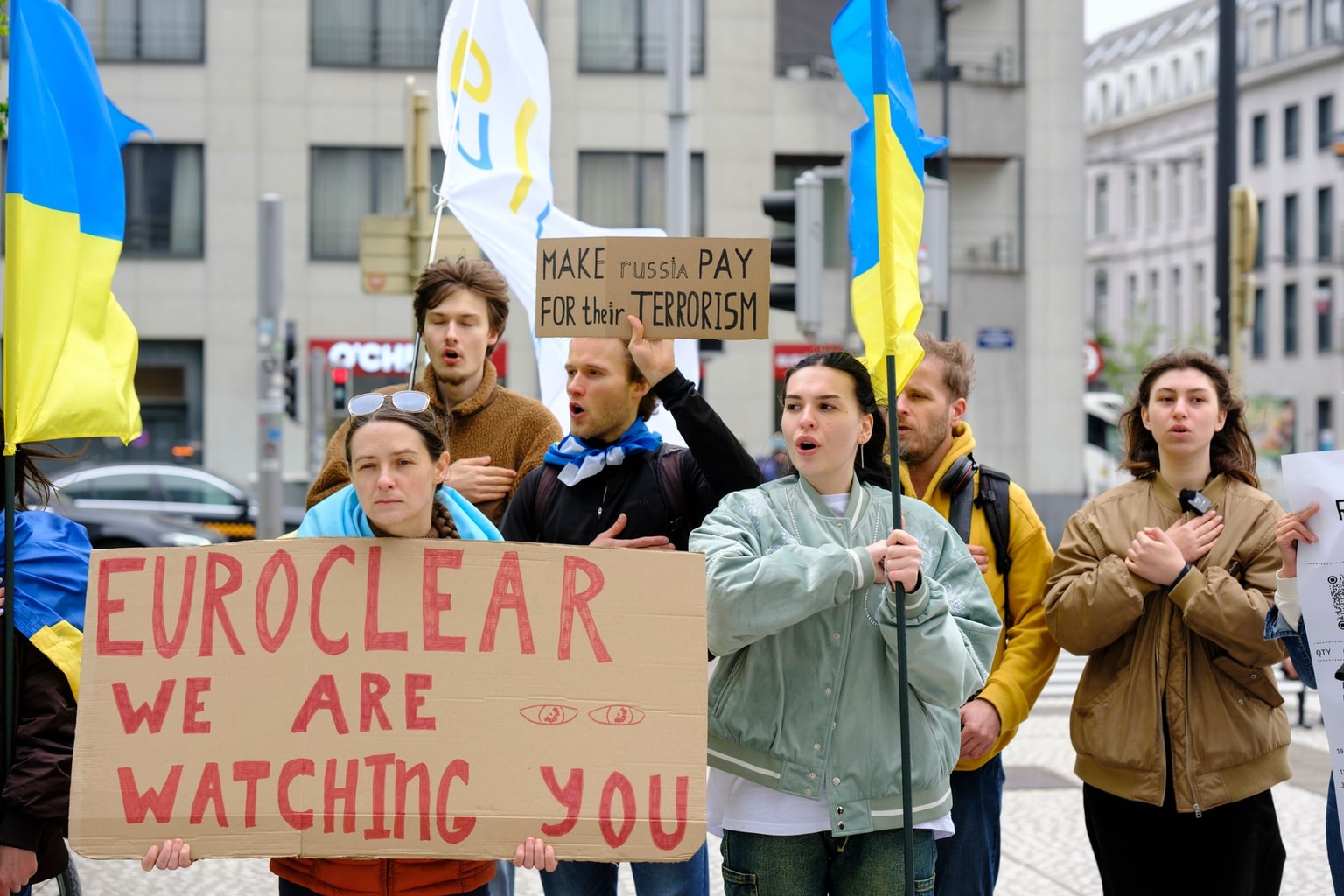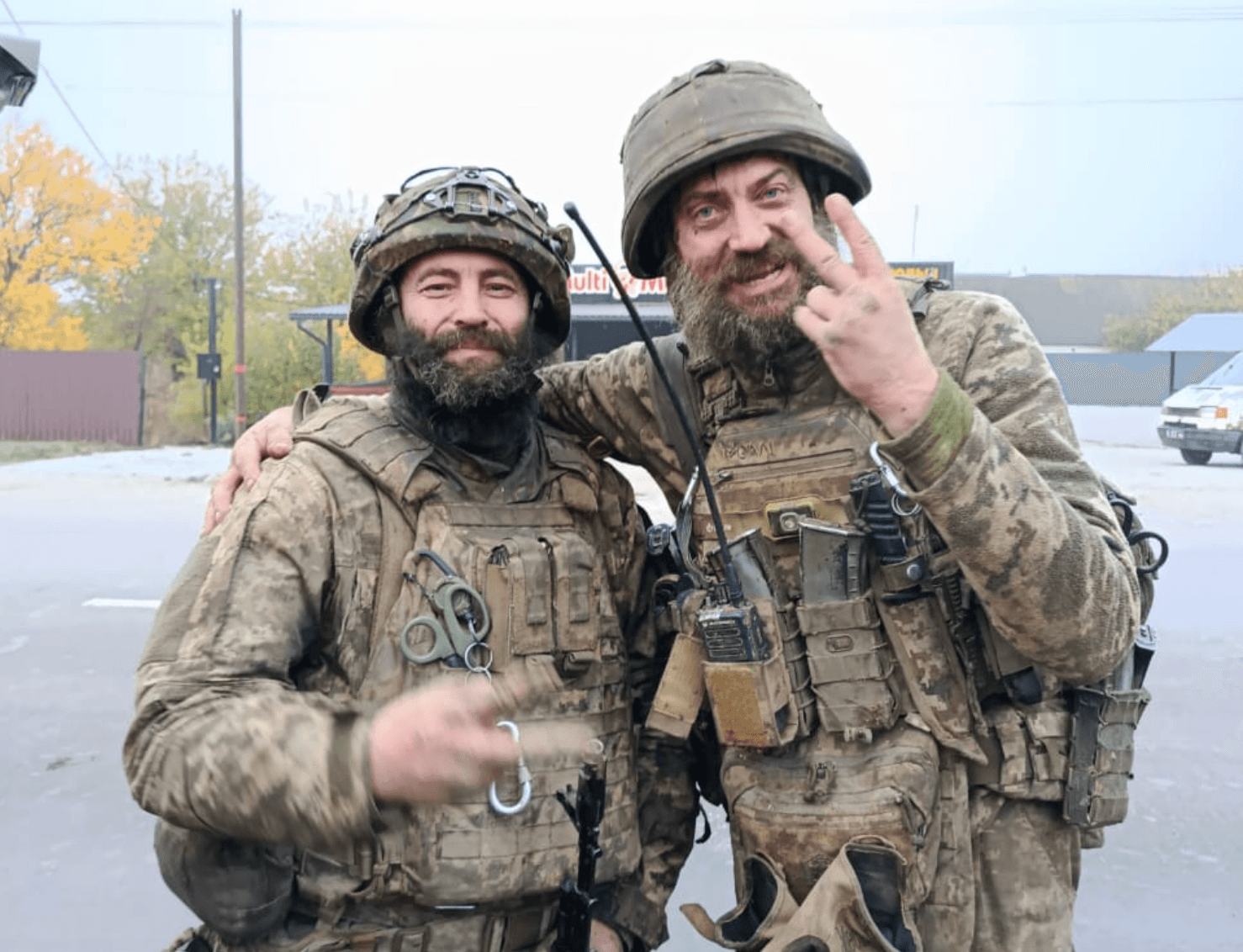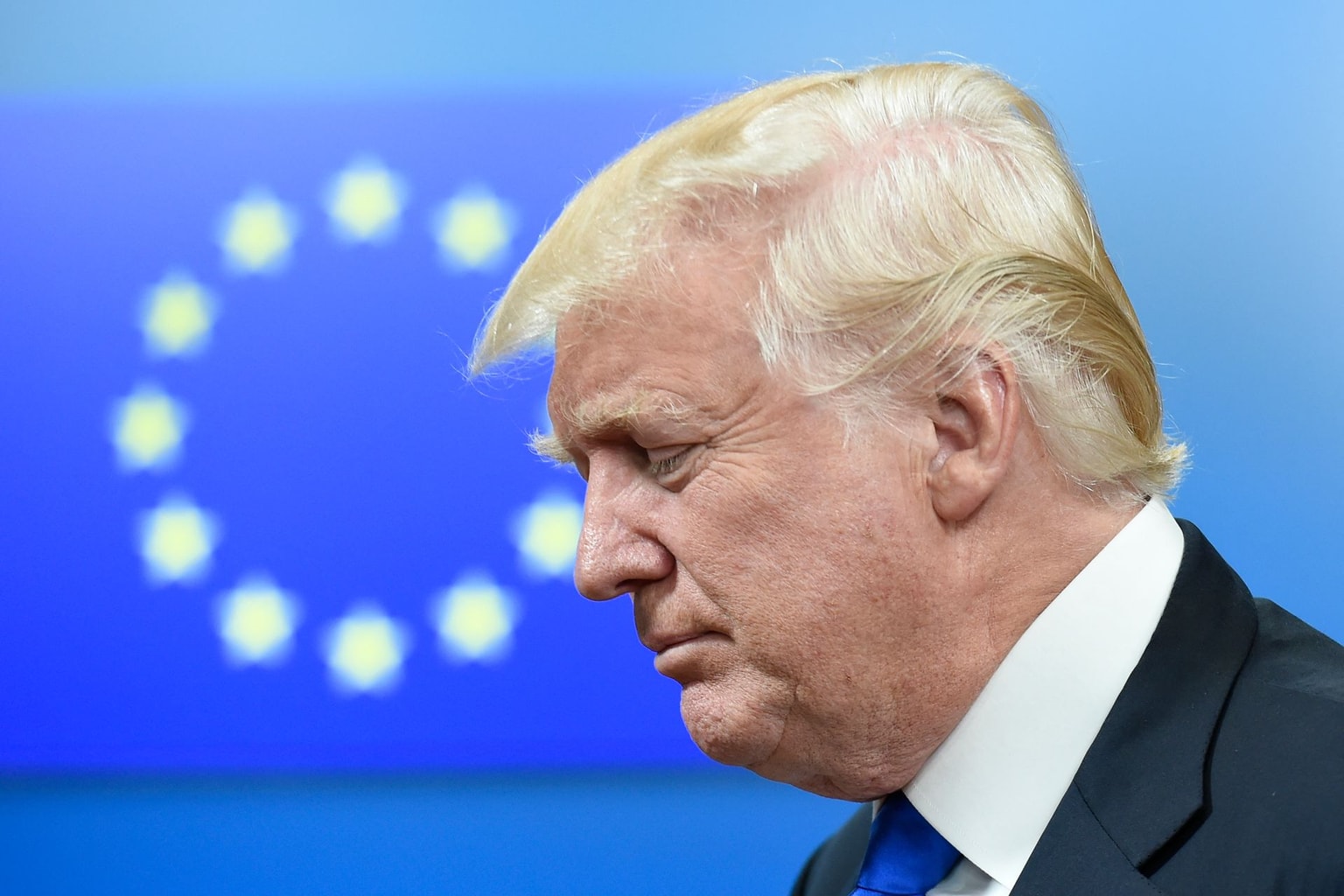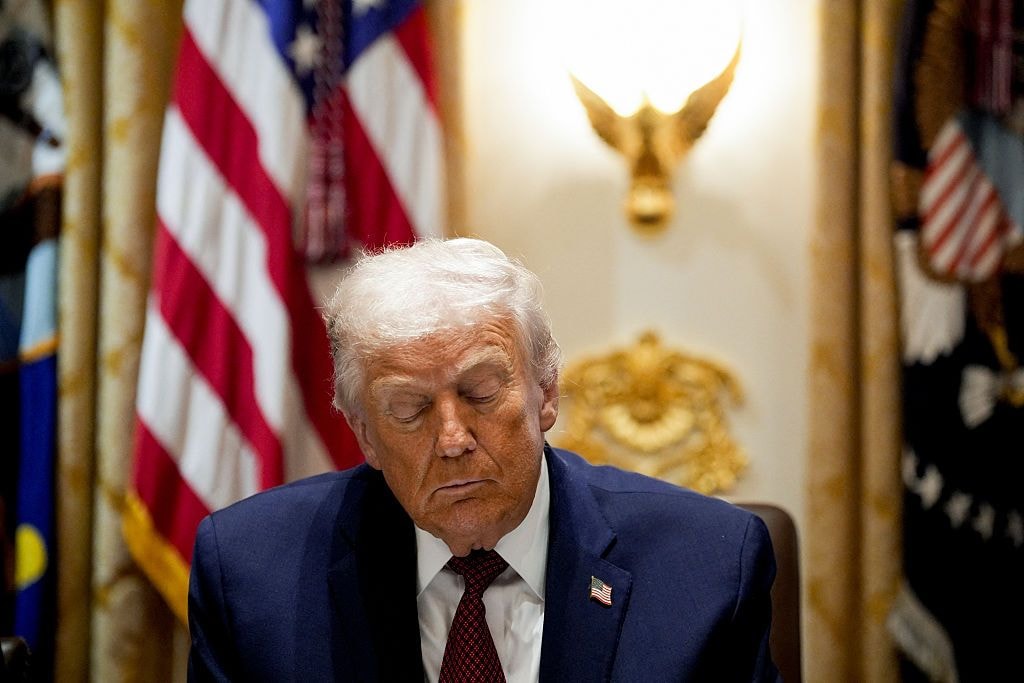
Don’t get too excited about Ukraine’s big Rafale fighter jet deal just yet
France’s President Emmanuel Macron (R) and President Volodymyr Zelensky (L) shake hands after signing an agreement at the Villacoublay Air Base in Velizy-Villacoublay, near Paris, France, on Nov. 17, 2025. (Christophe Ena / Pool / AFP via Getty Images)
President Volodymyr Zelensky’s recent announcements of long-term fighter jet deals with European allies presents an enticing vision of Ukraine’s future airpower — a fleet of hundreds of modern aircraft ready to defend the country's skies.
But that vision clashes with the country’s immediate reality: Russian advances on the front line, a $60 billion budget shortfall, the biggest corruption scandal of Zelensky’s presidency inside his own administration, and the threat of the worst winter energy crisis of the war so far.
Recent agreements with France and Sweden may signal long-term Western commitment, but they also highlight a widening gap between political messaging and the realities Ukraine faces today, experts told the Kyiv Independent.
With so many urgent pressures, it is unclear when — or whether — Ukraine will be able to benefit from these decade-long plans.
"The 10-year deal between France and Ukraine has two positive elements: it would rebuild Ukraine’s aircraft and missile defense systems after the war, and it signals a long-term security relationship between France and Ukraine," Mark Cancian, a senior adviser at the Center for Strategic and International Studies, told the Kyiv Independent.
"But the downside is that it won’t help Ukraine in the near term — and it’s not even a real deal yet, since key elements like financing still need to be settled," he added.
What exactly are these deals?
Ukraine has signed two long-term memorandums with France and Sweden outlining intentions to purchase Western fighter jets and air defense systems.
The French document, signed on Nov. 17 during Zelensky’s visit to Paris, allows Ukraine to acquire up to 100 Rafale F4 fighter jets by 2035, among Europe’s most advanced multirole fighters.
The second memorandum, signed with Sweden on Oct. 22, outlines a future contract for 100–150 Gripen E fighter jets, with deliveries expected over 10–15 years.

Swedish Prime Minister Ulf Kristersson emphasized that the letter of intent does not involve immediate transfers. Production capacity for the Gripen E, which only entered Swedish service this year, is limited; the earliest deliveries could begin "practically" within three years.
Zelensky has said Ukraine hopes to begin operating Gripens earlier, possibly as soon as next year, and Ukrainian pilots have already begun training.
Uncertainty
Despite their scale, the memorandums leave major uncertainties. They are not contracts and carry no legal obligations or guaranteed timelines.
"These are not real business deals — they are memorandums. They might be done, they might be not," Serhiy Fursa, deputy director at Dragon Capital, told the Kyiv Independent.
Financing is another question. The cost of procuring and sustaining fleets of Rafales and Gripens would run into billions of dollars.
"When we talk about financing, it’s obvious that Ukraine by itself doesn’t have such money and will never have it," Fursa said.
The memorandums remain political declarations, not instruments that can influence the war today.
He added that only the proposed reparations loan backed by frozen Russian assets could make such procurement possible.
"If Ukraine does get this money, then Ukraine will have enough to finance these deals. These memorandums could be one way of lobbying for the reparations loan, since Europe stands to earn money from it," he said.
Challenges Ukraine faces today
Questions about financing quickly run into a deeper problem — Ukraine is already struggling to cover its most basic needs, which leave little room for decade-long procurement plans.
Ukraine faces a $60 billion budget gap for 2026–27 and is counting on a still-uncertain "reparations loan" backed by frozen Russian assets. The initiative remains under development, and there is no guarantee the financing will arrive in time.
"There's no money in the budget, period. Not happening. If the whole Russian assets deal doesn't go ahead, these deals don't go ahead," Richard Aboulafia, managing director of AeroDynamic Advisory, told the Kyiv Independent.
At the same time, the situation on the battlefield has worsened significantly in recent weeks. Over the past month, Russia has advanced in areas where fighting has raged for more than a year, including around Pokrovsk and parts of Zaporizhzhia Oblast.
These gains come as Ukraine confronts a severe manpower crisis that leaves the military overstretched and increasingly unable to rotate exhausted units.
The winter ahead introduces another layer of urgency. Russia’s repeated strikes on Ukraine’s power grid have destroyed around 70% of generation capacity, triggering blackouts of up to 12 hours in some regions. In 2025, Russia has also for the first time hit Ukraine’s domestic gas production, wiping out about 60% of output.


And in the middle of a national energy emergency, Ukraine faces the largest corruption scandal of Zelensky’s presidency, centred in the energy sector itself.
Why now?
Officials argue that Ukraine cannot afford to lose its chance to secure future airpower, even if that future is 10 years away.
Air Force spokesperson Yurii Ihnat said that Ukraine has been aware of the need to transition away from its aging Soviet fleet since the early 2000s. But replacing them has always been slow and difficult.
"No country in the world easily sells high-tech weapons like combat aviation. It’s a long process of intergovernmental negotiations, and contracts typically take many years to implement," Ihnat told the Kyiv Independent.
He said that in recent years Ukraine has built an "aviation vertical" — with dedicated teams working on the issue at the Air Force Command, the General Staff, the Defense Ministry, the government, and the Presidential Office. The memorandums signed with France and Sweden, he added, are the political culmination of this long effort and a rare "window of opportunity" that Ukraine does not want to lose.
Analysts say that timing is also driven by domestic pressures.
"From the political leadership’s point of view, this looks like an attempt to offset internal corruption scandals with big foreign-policy signings. These are not shells or equipment that can protect us today. Strategically, yes, it’s important. But does it protect us now? No," Ukrainian political analyst Mykola Davydiuk told the Kyiv Independent.
Still, Davydiuk agrees that Ukraine must plan beyond immediate battlefield pressure.

"We were losing the sky to Russia. Drones are important, but they don’t give us air superiority — especially when Russia launches hundreds of Shaheds," he said.
He added that Ukraine ultimately needs Western fighter jets of all types — F-16s, Rafales, Gripens — but the memorandums remain political declarations, not instruments that can influence the war today.
Complicating matters further, one clause in the 28-point peace plan being pushed by the U.S. this week states that all "European fighter jets will be stationed in Poland."
What Ukraine can get — and what Ukraine needs now
The Rafale could theoretically be transferred earlier if France retired older models.
"There is a possibility that they could take some of their older Rafales out of service and give them to Ukraine now… but it would still take three to four months," Peter Layton, military expert at RUSI, told the Kyiv Independent.
"So even if they give the oldest aircraft they have, I couldn’t see them in service until mid-2026 at best."
Ukraine and France also agreed to launch new joint projects this year, including on interceptor drones, and Paris is preparing another air defense package.
But none of this addresses what Ukraine lacks most urgently.
Ihnat says the Air Force fully understands that long-term aviation plans will not help the immediate situation on the front line.
"This won’t change the situation on the front today. Right now, Ukraine needs missiles — for aircraft and for air defense," he said.
Additional reporting by Luca Léry Moffat, Abbey Fenbert, and Dmytro Basmat.









